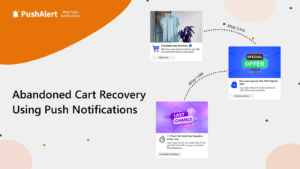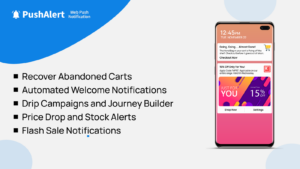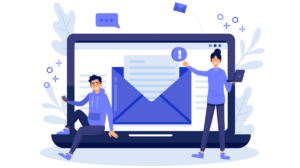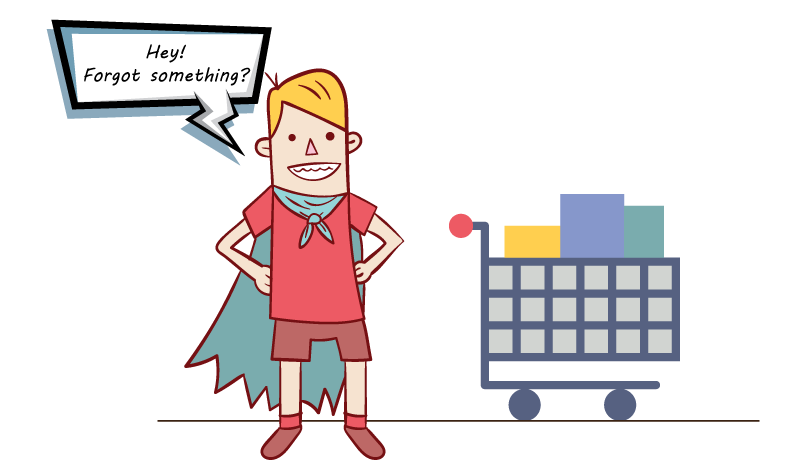
Recover Abandoned Carts with Web Push
Shopping cart abandonment is the biggest bane for online retail. According to data from Statista, about 77.3% of all online retail orders or shopping carts are abandoned. Recovering abandoned carts is a two-part process, first is checkout process optimization and then the retargeting strategy. Read more to understand how a browser notification based retargeting strategy can help recover sales that no other channel can recover.
Why do customers abandon carts?
Consider that a user has come to your website, browsed for a specific product and even added it to their cart but left without making a purchase.
Now, in this journey, the user was highly motivated to make a purchase but left at the last instant. The reason can be a simple distraction or something more tangible which we can fix on our checkout pages.
There are three pain points to consider when you are trying to optimize the checkout flow:
- The checkout flow should alleviate all fear and provide adequate information.
- It should foster trust and credibility in the organization.
- Reinforce benefits throughout the checkout process.
Just go back to the time you made your last online purchase. Were you 100% comfortable in providing your personal details?
Reducing Checkout Fear
Sometimes, customers may feel overwhelmed with the amount of information required on a checkout form. But there is a way to overcome this fear.
As an e-commerce site, you must have a valid reason to ask for the information and for the customer it should either be evident or explicitly mentioned.
Privacy is a major concern today. So it’s fair for a customer to question your intent with their personal information and if it’s safe with you. You may be the good guy here, but you still need to address these concerns.
That is where SSL certificates and trust seals have proven to improve conversion rates. Another way is to integrate live chat on your checkout page so that users can actually ask a real person about their issues and concerns.
Although, the most common fear of online shopping is whether I am getting the best deal or not. This is a major cause of cart abandonment. Users like to search for the same product on several websites until they find the best deal.
Coupons are the best way to reduce this fear, and in turn, you can get an email address or ask the user to opt-in to notifications.
So, even if they forget to checkout, you can always retarget them with an email or notification.
Building Trust and Credibility
Every message in your checkout process should foster trust. All messages whether they are asking for information or the shipping process should be clear.
Consider that you have premium shipment options available for 2 day or next day delivery, you should communicate when the order is expected to arrive with a date.
Another thing which can be done to foster trust and credibility is to provide assurances during payment.
This can be in the form of explaining how an additional authorization is required by the credit card company and once done, you will come back to the website. Trust logos and PCI compliance logos also help with fostering trust.
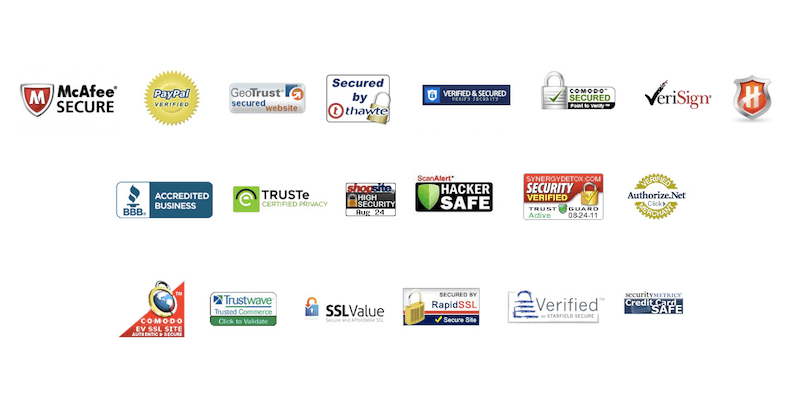
Trust and Compliance Logos also help in Building Credibility
One thing to note here is that trust messages are not just limited to assurances, privacy policies or logos. During the checkout process, the pricing of the product should be clearly mentioned along with any shipping or taxes applicable.
Any additional charge on a product should not come as a surprise on the payment page.
Breadcrumb navigation is another way to guide your customers. They easily know which steps have been completed and which remain. This keeps the user engaged and the finite steps also make the checkout process easier.
Here’s a short/non-exhaustive checklist for things to do or add on your checkout pages to build credibility:
- Clear Shipping Details
- Brand Reviews
- Contact information
- Easy navigation
- Professional branding
- Trust logos
- SSL
- Fast load times
- Online Chat
Reinforcing Benefits throughout the Checkout Process
The checkout process should continually reinforce why the customer should be doing business with you. Starting with the option to checkout as a guest, the benefits of creating an account must be highlighted.
The language on the checkout page should also be personalized, this helps build a sense of ownership. Instead of just laying down the summary of cart contents, quantity, the page can reinforce saying “You are purchasing …” the product.
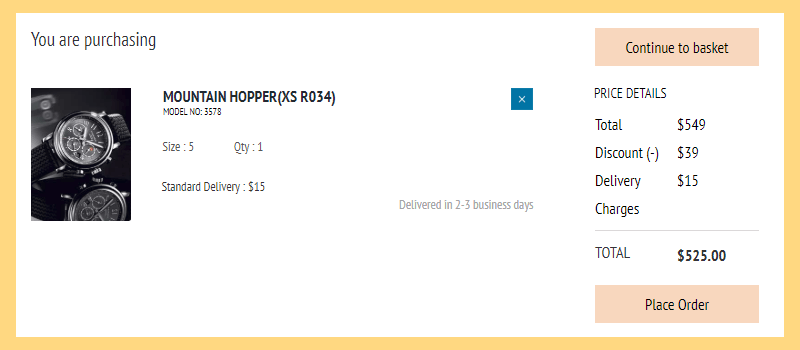
Foster Trust and Ownership during the Checkout Process
Another folly we see most often is the option to “Subscribe to Newsletter”, with no mention of why the customer should opt-in. A brief statement about the benefits of subscribing, including, new product announcements, updates, promotions can be highlighted here.
Never underestimate the impact of customer service. Even by just adding contact details of your customer service team on the checkout or payment pages can help improve conversion rate.
The customer feels reassured that in case of any issues, your team is accessible. A live chat or ticketing system is even more useful.
Now that you have optimized your checkout page, it is time to do some active checkout recovery.
Using Browser Push Notifications to Recover Abandoned Carts
Browser or web push notifications have the added advantage of reaching users in real-time, they are easy to implement and have brilliant click-through rates. With cart abandonment at an all-time high, as a marketer, you should be looking to get every advantage.
Neither email nor display ads come close to the engagement figures of web push. Simply because these are directed and personalized. Conventional methods have started to fall short, ad-blockers are taking over the internet and email open rates are at an all-time low. Even if people do open emails, there is a really small chance that they will click through. By default images are disabled in emails, which really doesn’t highlight everything you have to say.
Push Notifications, on the other hand, have a display rate of more than 70% and drive conversions up to 10% on average. Simply because there is no friction. You don’t need to have a browser open, log into your email provider’s service or open an app. These don’t get crammed into already full inboxes of promotions. Simply put, push notifications cannot be ignored.
Intent and Context
If a customer has come to the website and then added the product to cart, there is a clear intent of purchase. These are the customers who have already taken the journey through your funnel and are ready to be converted.
The first step is to make the customer subscribe. That is easy with web push, no personal information required. A simple 1-click process.
There are three basic kinds of shoppers that come to your eCommerce store:
- High Intent – Users who actually want to purchase
- Moderate Intent – Users who are just browsing the products, checking prices
- Low Intent – Users who just came to the homepage and left
This is where the context comes in. Depending on your product sales cycle and audience niche, the rules of engagement will differ. I may not want to buy a dining table twice in a month or even in 5 years. But I will buy the same grocery items every month.
That is why it is necessary to segment your subscribers based on the context and intent of purchase. Your high intent subscribers should be the top priority. They were ready to make a purchase but were possibly distracted. An automated abandoned cart recovery notification highlighting their products in cart, possibly with an image is the best way to convert these customers.
The second type or window shoppers can be enticed to checkout with a coupon or discount. Although, discounts should be used as the last resort when trying to reach out to customers. The focus should be on building lifetime value and a loyal customer base.
Again based on the sales cycle, you must time the abandoned cart notifications. Generally, a 45-minute window to recover abandoned carts has proven to be most effective in our research.
The users who just came to the homepage and bounced off can be a bit difficult to target. We don’t know what they were looking for and whether they even wanted to make a purchase. For such users, a broader, more generic notification with new arrivals, ongoing campaigns works better.
Improving your Conversion Funnel
Understanding why users are leaving your funnel is the key to recovering sales. Optimizing your funnel by setting up triggers at each step can be a potential game changer. You can create such a Conversion Funnel setup at PushAlert, which helps you reach out to subscribers who leave the funnel at any stage.
Next step is personalization. Even though your customer had left the funnel before completing a sale, a well-timed notification with details of their cart can bring them right back. A personalized notification has way better brand recall than an Ad on a website that can be easily blocked.
Here are some examples/templates of abandoned cart notifications that our partners have used to great effect:
Create a Sense of Urgency

Create Urgency to Recover Abandoned Carts
Upsell Combinations
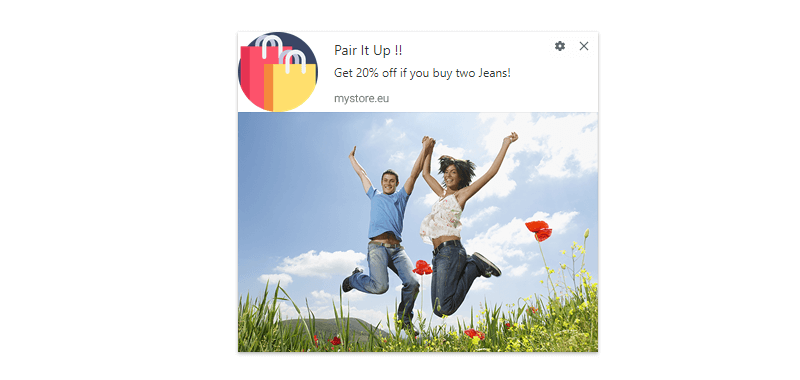
Upsell product combinations to increase cart value
Convert Buyers with Discounts or Coupon codes
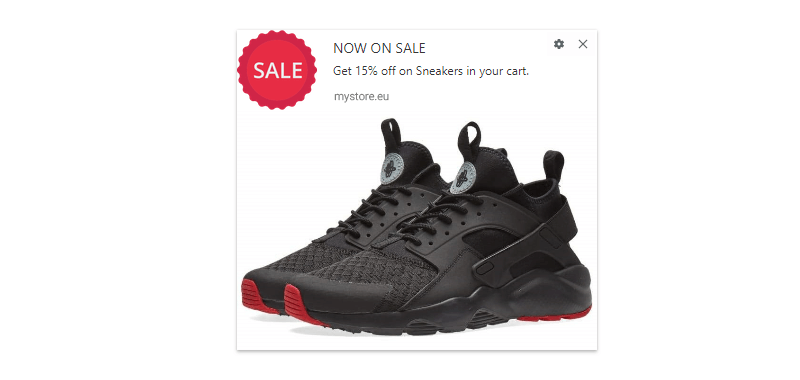
Recover Abandoned Carts with Product Specific Discounts
